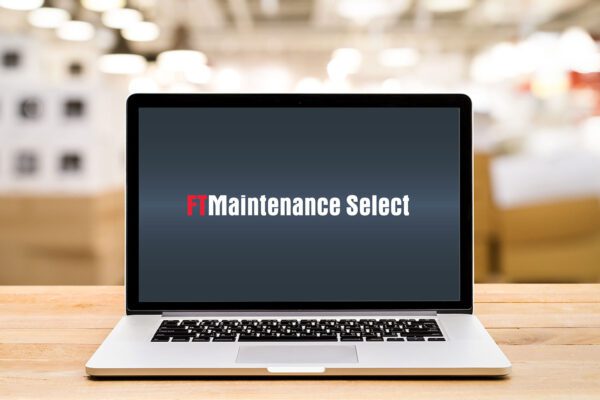
Setting goals is an important part of running any business. Goals set the priorities for everyone within the organization and clearly define desired outcomes. Generally speaking, maintenance management goals relate to cutting costs and improving productivity, which ultimately leads to increasing profitability. In this article, we discuss how computerized maintenance management system (CMMS) software helps organizations reach common maintenance management goals.
Are Your Goals SMART?
First, let’s talk for a minute about goals. Whether developed by you or handed down by upper management, it is important to make sure that maintenance management goals are practical and actionable instead of vaguely-stated wishes.
Probably the most well-known, widely-used method for writing goals is the SMART framework. SMART is an acronym that stands for Specific, Measurable, Attainable, Realistic, and Timely:
- Specific: clear, precise, unambiguous
- Measurable: quantifiable, trackable, has an indicator of progress
- Attainable: reasonable to achieve; challenging, but possible
- Realistic: relevant, within your power to achieve
- Timely: time-bound, within a defined timeframe, has a deadline
Though not all goals fit the SMART mold, the elements of SMART help you create more thoughtful, strategic maintenance management goals and evaluate the effectiveness of your current goals.
The Importance of SMART Maintenance Management Goals
Because maintenance is a cost to the organization, the maintenance department is often viewed as a place to save money by cutting back. This typically results in lower maintenance budgets, understaffing, and managing excessive maintenance on legacy assets.
SMART goals prioritize maintenance activities and focus your efforts so that you can strategically allocate your resources to meet broader organizational goals. When maintenance costs go down as a result of progressing towards goals, money may become available for additional staff, tools, and other maintenance resources.
Additional Reading: How to Combat the Maintenance Technician Shortage
Maintenance Management Goals

While each organization has their own unique maintenance management goals, below are some common goals shared by many maintenance organizations.
Improve Asset Reliability
The top goal of most organizations is improving asset reliability and decreasing the frequency of failure. Equipment that can run continuously without requiring stops for maintenance means that it is easier to hit production quotas, maintain consistent sales, and ultimate, boost profitability.
To improve reliability, most organizations implement a preventive maintenance (PM) program that includes tasks like inspections, lubrication, cleaning, and replacing worn parts. These activities allow maintenance technicians to identify small issues that could lead to future failures and preemptively address them. With this proactive approach, downtime can be planned when it is convenient for production.
Be More Proactive
Even with the widespread availability of preventive maintenance software, many organizations still approach maintenance in a reactive manner. Unplanned asset failures are often more serious (and costly) and greatly reduce an asset’s useful life over time. To optimize equipment performance, organizations seek to become more proactive and focus on reducing or eliminating the causes of failure.
Further Reading: How to Implement a Proactive Maintenance Strategy
Extend Asset Life Cycles
New equipment is costly. Organizations would rather maximize their use of existing equipment instead of being forced to replace equipment before it’s lived out its useful life. To get the most value out of their assets, organizations often desire to collect and track performance data in order to make more informed asset management decisions.
Lower Maintenance Costs
An overall goal of any business is to lower maintenance costs. Fortunately, maintenance management presents multiple opportunities to save money. For example, organizations can replace legacy equipment that requires frequent maintenance or perform more preventive maintenance to decrease unplanned downtime. Each of these requires an upfront investment, but pays off in the long run.
Maintenance departments with tight budgets can lower maintenance costs by making operational improvements, such as organizing the maintenance storeroom, standardizing repetitive tasks to increase their effectiveness, or reorganizing the maintenance team to increase productivity.
Improve Regulatory Compliance
Maintenance teams must comply with OSHA regulations, in addition to myriad local, state, and federal regulatory requirements. Organizations, especially those in highly regulated industries, have an ongoing goal of passing maintenance audits and ensuring that asset maintenance is performed in accordance with the standards and requirements set by regulatory agencies, such as the United States Food and Drug Administration (FDA) or International Organization for Standardization (ISO).
Further Reading: Why You Shouldn’t Fear Maintenance Audits
Reaching Your Maintenance Management Goals

Setting goals is only half of the battle – now you must do the work to achieve them. Results-driven organizations use computerized maintenance management system (CMMS) software to help them reach their maintenance management goals. CMMS software enables organizations to:
- Reduce costs related to asset management, equipment maintenance, and MRO inventory
- Increase employee productivity and mobility
- Easily manage maintenance schedules and employee workloads
- Be more proactive instead of reactive
- Improve communication between the maintenance department and the rest of the organization
- Extend equipment lifecycles and maximize performance
- Generate and analyze maintenance reports to track progress towards goals and make future improvements
- Document and comply with safety and regulatory requirements
Reach Your Maintenance Management Goals with FTMaintenance Select
Setting SMART goals drive continuous improvement and operational excellence. A CMMS solution like FTMaintenance Select is a critical tool for holding yourself and others accountable for reaching your maintenance management goals. Request a demo today to learn more.